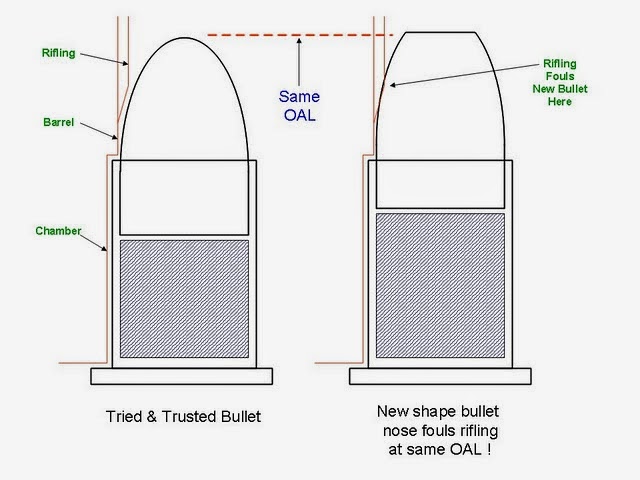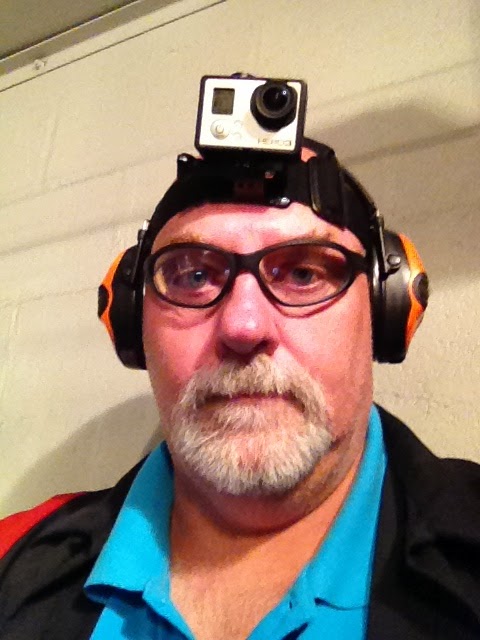1. I had a great time!
2. I shot ok, but scored poorly (and yes, that is possible)
3. I had a great time!
I was up early and on the road a tiny bit later than hoped, but still in plenty of time. Signed in, got my score sheets and promptly stuck the barcode labels in the wrong spot. Oh, well. I had fun with it and it doesn’t appear to have actually hurt me 🙂
The match started pretty much on time and my squad started at Stage 8. Between “first stage” jitters and the general weirdness of the stage itself, comprised of three arrays of targets at different tactical sequence ranges, many with partial hard cover and a swinger directly in front of the seated shooter, it was not my best score ever. The SO warned us that it had generated a lot of FTNs and sure enough I had one on that stage; not the last of the day, I might add. At least I got the pressure of achieving a zero down match out of the way early.
After a bit of a lukewarm start, the rest of my shooting was not bad. Lots of 0’s and 1’s, a few 3’s, and occasional honest misses. By the term “honest miss”, I mean a miss when engaging a target. The pain point of my performance was a couple of stages where I failed even to engage some targets.
The worst of these was Stage 5. As the first shooter on this stage, I did not have the benefit of seeing others’ plans and my own relative inexperience lead me to skip two targets. For the steel, that’s 5 down plus an FTN plus a procedural for not shooting in sequence, and for the paper, 10 down plus FTN plus procedural. The rest of the stage was 0’s and 1’s.
Stage 10 was one where poor planning resulted in running out of ammo at a critical point. There were two disappearing targets triggered by falling steel. The first went well. Drop the steel, it triggers the paper target, which turns to expose then turns back to hide. The shooter has about one second to place two rounds on it. Proceeding to the second one, I dropped the steel, fired one at the paper and… slide lock. My one shot missed, so 10 down. At least there is no FTN on a disappearing target. In my defense, at least one shooter slide locked dropping the steel and had no shots for the target itself. The better plan for me would have been to drop the first steel then shoot to slide lock at the first target, which would have been four rounds. Reload, drop steel then take at least three shots at the second paper. Next time.
Stage 2 was a fairly average score, but due to some taping logistics, I got a free 0 out of a disappearing target. When triggered by a falling steel target, it raises straight up, which causes it to drop it’s counterweight, which makes it again fall out of sight. John S and I were the main people resetting and taping this target, but it turned out we were adjacent in the shooting order. I taped and reset the target when John was on deck, but when I was on deck, John was following the SO counting his own scores. Someone reset the target but nobody tapee it. When we counted my scores, there were three 0’s and a 1. The SO elected to give me a 0 on it. I checked with John and he gotten a 0 on it, which means the single 1 was actually mine. So, tiny bonus!
The painful bit was my overall score. My total raw time was 433.79, which itself would be just below the center of the pack in my class & division. However, 162 points down, 2 Non-Threats, 4 Procedural Errors and 3 Fail to Neutralize tacked on another 118 seconds, for a total of 551.79, placing me third…. from the bottom. Really, next to the bottom. The very bottom shooter did not finish.
The other bad stat, which also doesn’t account for the fact that I got 0 or 1 down on 78 of the 106 targets is “Least Accurate”. Understandably, however, 162 points down is still 162 points down. I was number 228 of 234 shooters on that list. Ouch.
I was slightly rushed when editing, so the video is pretty basic. I started at Stage 8, and the stages were shot in an offset sequence, but they are presented in stage order here. Stages 2 and 3 are missing because I didn’t start the camera correctly (if at all) before those two stages. The memory card on the camera filled up while we were scoring Stage 7, my last for the day.
I just barely broke into my 6th box of ammo, using just over 250. That would include about a dozen unrecovered live rounds cleared at the end of the stages, so I shot a pretty solid 230+ rounds. I thought I had no ammo troubles, but in putting the video together, I found a failure to go into battery in Stage 7 that I had cleared quickly and forgotten. The first magazine was downloaded to 6 rounds. I emptied that one, changed magazines, fired one shot and that second round did not go into battery. I probably should have bumped it in, but I racked it out instead. That was the only one for the whole match.
In the chronograph stage (also not on video because it wasn’t me shooting), my ammo performed well, too. I used load data from various sources to arrive at my particular load, 4.5 grains of Titegroup pushing a 165 grain RNFP plated bullet from Rainier Ballistics. I had not clocked them myself, but I predicted about 950 FPS. The official chrono rounds were 968, 933 & 986, for an average of 962, power factor 158.
Titegroup is reputed for burning pretty clean, especially at higher pressure loads. After the match on Saturday, the muzzle of the pistol had a tan colored deposit. It reminds me of the color deposited on the spark plug of a well tuned engine. Maybe there is a correlation; maybe a 165 grain bullet sitting on 4.5 grains of Titegroup approaches stoichometric.
Speaking of ammo, I have just started using some Tula small primers that I acquired in a group buy back in December. I have found that they seem to feed better than the Winchester WSPs that I have been using for a while. After a little analysis, I think there are two reasons. First, they appear to be smoother or maybe plated. While it’s not a lot of friction, less is usually better. Also, the Tula primers are heavier by about 0.5 grains each. Since there is a column of primers in the chute, a half grain times about 20 primers in the chute is about a half a gram more gravity at work. That doesn’t sound like much, but for the smooth flow of primers down a plastic chute, it may be enough to make a difference.
The cup is slightly thicker on the Tula, which probably accounts for some of the weight difference and may also explain the occasional complaint of light strike misfires on Tula primers. The anvil is of a slightly different design and is likely made from the same gauge of brass.
I don’t care for the plastic tray that the Tula primers come in. It appears to be designed to flip the primers anvil side up while in the trays. However, I need them to be anvil side up once transferred to the primer tray on the press. So far, I have not found a reliable way to turn them. I have gotten close by placing a plate over them, flipping the whole assembly, pushing them into a small bundle, then covering the bundle with the primer tray and flipping that back. Because of the dimension of the plate and tray, the primers either drop a couple of millimeters and bounce or turn maybe even fall out. I will figure out something.





